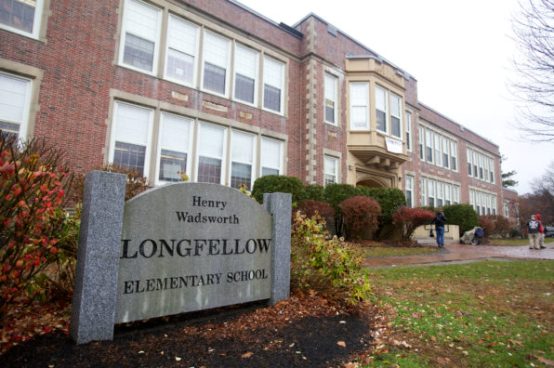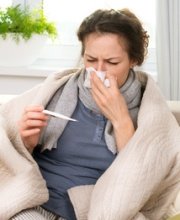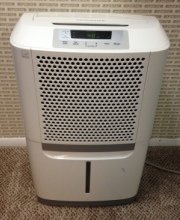Find a Mold Specialist Now
Click or Call, Toll-Free 24/7
Mold in Schools: Parents be Aware
Mold in schools has been in the news frequently the past few years. Children spend more time in their schools than any other place except their homes. As large, complex structures holding sizeable populations that constantly enter and exit, school facilities tend to age at a faster rate than other buildings. Especially in the more humid and damp regions of our country, older schools are subject to moisture issues caused by structural deficiencies, as well as wet coats and backpacks coming in from the playground on a showery spring day.
Controlling mold in schools means controlling moisture and ventilation. Older school facilities with large bathrooms, locker rooms, pools, and a population of hundreds or even thousands, often time have trouble accomplishing this. And the statistics bare that out. In a joint study by the EPA and the US Government Accountability Office (GAO), it was determined that thirty percent of schools were experiencing plumbing issues and twenty seven percent were experiencing roof problems.
Clearly, this is a recipe for mold growth. And even conservatively, this can be affecting millions of people. However, the reporting of mold statistics in our schools is constantly clouded by the liability and public relations concerns of our school districts. This is understandable, if also unfortunate, when one considers the prevalence of asthma and allergies in children, which of course are conditions greatly exacerbated by the presence of mold. So, although we may not know exactly how many of our schools actually have a real mold issue, common sense can help paint a picture of probability.
 Mold was found in this school in 2017
Mold was found in this school in 2017Causes of Mold in Schools
Wet coats from damp playgrounds getting stuffed into lockers is certainly a contributing factor to increased moisture levels that can spawn mold growth. But schools can get battered by many other factors. Flat roofs often have drainage issues, making for leakage. The high populations of students, faculty and staff makes for a much higher probability of moisture gathering in what would be considered normal places. Around water fountains, on bathroom tiles, in locker rooms and showers, it’s likely that moisture levels can be highly elevated, making mold growth easy. Library carpets and even the pages of books can be great hosts to moisture and therefore mold, especially when one considers the difficulty of ventilating the shelves holding the World Book Encyclopedias that these days only get touched every so often for novelty reasons. Add to that the fact that many schools with growing student populations use additional, temporary structures for classrooms or administrative offices that are usually always more susceptible to water intrusion, and it’s not a stretch to suspect the likelihood of a mold presence in a school and a looming health hazard to everyone inside.
With budgetary pressures, even older schools attempt to tightly seal themselves to save on energy costs, further decreasing ventilation. For the same reasons, when schools are not in session air circulation is often decreased. This aspect becomes even more intriguing when one considers that schools are often closed securely for three months every summer when temperatures can rise, making any moisture accumulation blossom into a moldy concoction that will be waiting to irritate the next student with asthma or allergies who returns in the fall for a new school year.
So, it’s not difficult to see how a school can easily develop a mold issue, threatening the health of it’s students, faculty, and staff. And it’s also easy to understand why parents would be concerned, especially about a child with respiratory ailments and allergies. The question then becomes: what is a concerned parent to do? Other than over-reacting and beginning a home school regiment?
What Can Parents do?
This complex question can really only be answered with a general suggestion: a parent should get involved.
School districts are charged with doing regular walk throughs of a school to examine the structural integrity and determine maintenance priorities. Any concerned parent should request to be present during one of these. A schedule of such walk throughs will not be difficult to obtain, and any parents present can see first hand the conditions of ceilings, closets, lockers, library shelves, locker rooms, training areas, pools, kitchens and all other areas of a school that usually find themselves out of a parent’s mind because they’re almost always out of sight.
By participating in school walk throughs, and asking questions, a parent can see first hand the condition of the very structure their child spends so much time in, and also verify that the proper steps are being taken to control moisture, ventilation, and therefore mold growth. From there, suggestions to administrators are more easily made, and better received. Suggestions like these:
- Humidity can be reduced, and air circulation increased, by allowing HVAC fans to run around the clock, regardless of whether school is in session.
- Any land scaping projects or improvements need to be implemented so that all water, regardless of source, flows away from the building.
- Condensation build up on cold surfaces like windows and pipes is an all too common source of moisture and mold growth. Are there efforts in place to control this? Parents need to ask.
- Suggesting that a protocol be in place to deal with wet coats fresh off a playground is certainly not unreasonable. Stuffing them in small lockers or closets will not help the battle against mold in a school.
As prevalent as moisture can be in a school, and as likely as mold growth is, the topic is largely taboo and public discourse is discouraged. In the fall of 2017, mold was discovered at Longfellow Elementary School in Portland, Oregon, and the district had to scramble to control not only the mold, but the story. States across the union have had lawsuits over mold in the workplace brought by teachers and staffs rejected. It’s also not uncommon to accuse the Risk Management departments of public school districts to be more concerned with warding off liability than they are keeping schools healthy. Naturally, concerned parents can feel overwhelmed and intimidated with regards to a mold issue, when the health of their child is their only concern.
The best advice for such a parent is to simply get involved and pay attention. Request to be present for the next school walk through. Ask questions. Monitor your child’s health and look for differences when they’re in and out of school. Support your schools budget but hold spending accountable. Fundamental priorities like building structure and the health of the environment hosting hundreds of children should take precedent.
Mold in our schools is abstract to measure, difficult to control, but very real. Awareness of what causes it and how to control it is paramount. The participation and involvement of the community in an effort to control it is fundamental.
Return From Mold In Schools To Our Main Mold Health Issues Page
About The Author:
Matt Cordova is the manager of sales and marketing at ZeroMold in Portland, Oregon. ZeroMold specializes in eco-friendly, EPA approved, and demolition free mold remediation and air sanitization and is a major proponent of healthy indoor air quality free from mold, viruses, and allergens.
Privacy Policy Terms and Conditions Accessibility Do Not Sell My Information Disclaimer Contact Us




